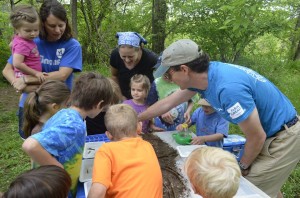It can be difficult to argue against standards-based learning. We want our students to achieve at least a minimum level of competency in all subjects. We need our teachers, our schools, and our communities to be held accountable for that success.
Concern arises when we lose sight of the fact that real-world problems aren’t solved in a subject specific vacuum. In addition to being “competent” in the standards, society needs today’s students to become creative problem-solvers, integrating many subjects before arriving at a possible answer. They must have the fortitude — or “grit” — to go through the “prototype-test-redesign” required of authentic problem-solving.
Of course, students need to understand the complexity of the problems in the first place.
As a community, we have largely failed to shape our students into future citizens capable of enthusiastically developing solutions to the problems we’ve forced upon them, particularly in the areas of the environment and conservation.
We’ve passed on plenty of problems, but not many useful tools. As a community, we can do better.
Multiple choice tests can measure fact-based student knowledge, but evaluating the impacts of local land use on water quality is an even better measure. It’s one thing for students to study the atmosphere; it’s quite another for them to analyze the potential effects of climate change on Virginia’s economy.
Students need to use better tools which provide them with a better understanding of real-world complexities — such as outdoor field experiences and in-depth studies of local environmental issues. They must develop the ability to evaluate informational sources and interact with conservation professionals.
Students need to design solutions to these real problems NOW, with guidance from experts.

